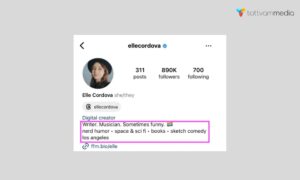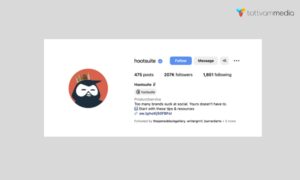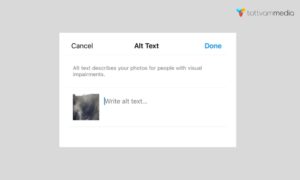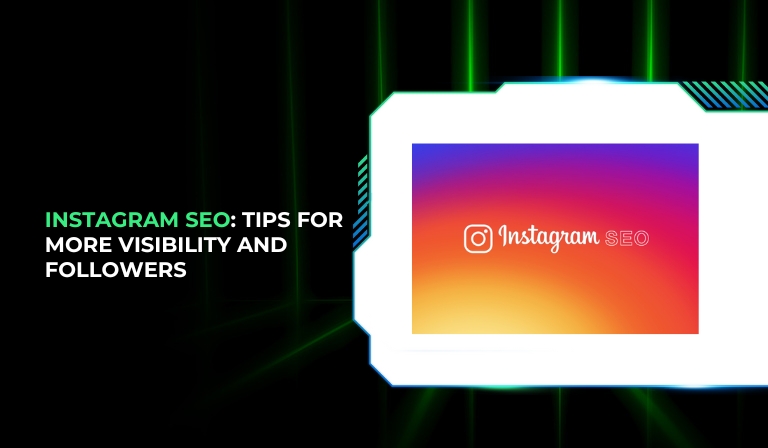In today’s digital world, social media platforms like Instagram are pivotal for building your brand and reaching new audiences. However, simply posting great content isn’t enough.
To truly stand out on Instagram, you need to master Instagram SEO. By optimizing your Instagram profile and posts for search, you can boost visibility, increase organic reach, and attract more followers.
This comprehensive guide will walk you through the essentials of Instagram SEO and provide actionable tips to enhance your presence on the platform.
What is Instagram SEO?
Instagram SEO refers to the practices and techniques used to improve your profile’s and posts’ visibility on Instagram. By applying SEO principles to your Instagram strategy, you can optimize your content to appear in more searches, attract the right audience, and ultimately grow your following.
Instagram SEO involves several key elements, including keyword optimization, hashtag strategy, content quality, and engagement metrics. The goal is to make your profile and posts more discoverable both within Instagram and through external search engines.
Types of Instagram SEO
To successfully navigate Instagram SEO, it’s essential to understand the different components of your profile that can be optimized for greater visibility. Below are three crucial types of Instagram SEO and how you can optimize them.
1. Instagram Bio SEO

Your Instagram bio serves as the front door to your profile, making it one of the most important elements in your Instagram SEO strategy. A well-crafted bio does more than just introduce you; it acts as a mini-resume for your brand, enticing visitors to follow you and interact with your content. Here are the key elements to include in your bio:
- Who You Are: Clearly define your brand or identity. This might include your business name, your role, or the main focus of your content. Use simple, straightforward language to communicate who you are quickly. For instance, a photography account might say, “📸 Professional Photographer | Capturing Moments.”
- Content Focus: Indicate what type of content you create or share. This could be lifestyle tips, fitness advice, travel experiences, or anything specific to your niche. Use action-oriented phrases like “Sharing daily wellness tips” or “Exploring culinary delights” to make it clear what followers can expect.
- Relevant Keywords: Integrate keywords that your target audience might use to find content like yours. Research popular search terms relevant to your niche and incorporate them naturally into your bio. For example, a vegan recipe account could include keywords like “vegan,” “healthy recipes,” and “plant-based cooking.”
- Call to Action (CTA): A well-optimized bio should also include a call to action that prompts users to take the next step, whether it’s visiting your website, checking out your latest post, or following you. Phrases like “👉 Click the link below for recipes!” or “👇 Follow for daily tips!” can guide user behavior.
- Use of Emojis: Emojis can make your bio visually appealing and can also help convey your message more quickly. Use them to break up text, add personality, and highlight key information. However, use them sparingly to maintain professionalism.
A well-optimized bio not only captures attention but also provides essential context for search engines, making it easier for users to find your profile. Remember, you only have 150 characters, so make every word count!
2. Instagram Name SEO

Your Instagram name and username are vital for SEO and play a significant role in how users and search engines identify your profile. Both should be carefully considered to maximize your discoverability. Here’s how to optimize them effectively:
- Username: Your username is your unique identifier on Instagram, and it’s the first thing users see. It should reflect your brand and be easily recognizable. For example, if your brand is called “FitLife,” using “@fitlife” or “@fitlifeofficial” would make sense.
- Display Name: Your display name is searchable and is often overlooked. This is the name that appears at the top of your profile and can include relevant keywords. For instance, if you’re a digital marketing consultant, using “John Doe | Digital Marketing Expert” can help you appear in searches for those terms.
- Keyword Integration: If your brand name doesn’t clearly convey what you do, consider adding relevant keywords to your display name. This can be an effective way to ensure your account appears in searches. For example, a graphic designer might use “Jane Doe | Graphic Designer & Illustrator” to attract users searching for design services.
- Brand Consistency: Maintain consistency across your social media platforms. If you have established a brand presence on other platforms, try to use the same username and display name on Instagram. This helps with brand recognition and makes it easier for users to find you.
- Avoid Special Characters: While they may be tempting, special characters can confuse users and make it harder for them to find you. Stick to letters and numbers for maximum clarity.
By optimizing your username and display name with relevant keywords while maintaining brand identity, you increase your chances of being discovered in search results.
3. Alt Text for Images

Alt text is a powerful tool for improving your Instagram SEO, yet it is often underutilized. Here’s how to effectively use alt text to your advantage:
- What is Alt Text?: Alt text, or alternative text, is a description added to images to convey what the image depicts. This description helps improve accessibility for users with visual impairments, allowing screen readers to convey the content of the images. Additionally, Instagram’s algorithm uses alt text to understand what your images represent.
- How to Add Alt Text: When you upload an image, you can add alt text by tapping on “Advanced Settings” before sharing your post. You’ll find an option labeled “Write Alt Text.” Here, you can enter a descriptive text that includes relevant keywords. For example, if you’re posting a photo of a vegan burger, your alt text could read, “Delicious vegan burger with avocado and fresh vegetables.”
- Best Practices for Writing Alt Text:
- Be Descriptive: Provide enough detail to give context. Include information about the setting, colors, and any key elements that contribute to the image’s message.
- Use Keywords Wisely: While it’s important to include relevant keywords, avoid keyword stuffing. The alt text should read naturally and make sense within the context of the image.
- Limit Length: Aim for 1-2 short sentences. Instagram typically truncates alt text after a certain length, so prioritize key information.
- Focus on Accessibility: Remember that the primary purpose of alt text is to assist visually impaired users. Think about what someone who can’t see the image would need to know to understand its content.
- Impact on SEO: Including relevant keywords in your alt text not only aids accessibility but also improves your chances of appearing in search results when users look for those keywords. Instagram’s algorithm considers alt text when determining the relevance of your content, so use this feature to your advantage.
Why is Instagram SEO Important?
Historically, users primarily discovered content through hashtags or the Explore page. However, as social media evolves, more users are turning to the search bar for content discovery. This shift makes Instagram SEO crucial for brands aiming to connect with their target audience.
In fact, Hootsuite conducted an experiment comparing SEO-optimized posts with those relying solely on hashtags. The results showed that SEO-optimized posts experienced a 30% increase in reach and twice as many likes. To effectively reach an audience actively seeking your products or services, embracing Instagram SEO is essential.
Instagram SEO Ranking Factors
Understanding the factors that influence Instagram SEO can help you refine your strategies. Here are four key ranking factors:
Search Text:
What users type into the search bar is the most critical signal. Instagram searches for relevant usernames, bios, captions, hashtags, and locations based on the search terms entered.
User Activity:
Instagram considers user activity, including accounts and hashtags users have followed and engaged with. Accounts that users frequently interact with will appear more prominently in their search results.
Popularity Signals:
Content that is already popular will likely rank higher in search results. Popularity is gauged by likes, shares, comments, and overall engagement metrics.
Content-Specific Signals:
Each type of content (e.g., posts, Stories, Reels) is evaluated by its own algorithm. Understanding how each content type is ranked can help you tailor your strategy.
11 Instagram SEO Tips to Increase Your Reach
With a foundational understanding of Instagram SEO, you can implement specific strategies to optimize your profile and content effectively. Here are 11 practical tips to help you boost your visibility and engagement:
1. Incorporate Keywords in Captions
Using Instagram SEO keywords in your captions is the first step toward effective optimization. Research the search terms your target audience is likely using and weave them into your captions organically.
Tools for Keyword Discovery:
- Google Analytics: Analyze which keywords are driving traffic to your website.
- Google Trends: Discover related keywords that may resonate with your audience.
- Hootsuite Insights: Utilize features like word clouds to identify common keywords associated with your brand.
2. Use SEO-Driven Hashtags
Instagram hashtags remain relevant in the SEO landscape. Follow these guidelines:
- Use a mix of popular, niche, and specific hashtags.
- Limit your hashtag use to 3 to 5 per post for maximum effectiveness.
- Ensure all hashtags are relevant to your content and avoid generic tags.
Note: Hashtags must be included in your captions, as hiding them in comments is no longer effective.
Hashtag Research:
- Analyze your Instagram Insights to determine which hashtags are driving traffic.
- Conduct social listening to see which hashtags are popular among your target audience, competitors, and influencers.
3. Optimize Alt Text
Custom alt text is essential for both accessibility and SEO. Here’s how to add alt text to existing posts:
- Select the image you want to edit.
- Click on the three dots in the top right corner.
- Choose “Edit” and then “Edit Alt Text.”
- Add a detailed description of the image, including relevant keywords where appropriate.
Best Practices for Alt Text:
- Describe objects, concepts, and locations.
- Include any text present in the image.
- Aim for 2-3 concise sentences.
4. Utilize Video Subtitles
Adding subtitles to your videos can enhance accessibility and provide valuable context for SEO. This practice not only helps visually impaired users but also allows search algorithms to better understand your video content.
To enable auto-generated captions:
- Go to your profile and tap the three lines in the top right.
- Access “Settings,” then “Accessibility.”
- Toggle the captions option to the “on” position.
5. Post at Optimal Times
Posting at the right time can significantly impact your engagement rates. Use tools like Hootsuite’s Best Time to Publish feature to determine when your audience is most active.
This tool provides insights based on past performance, helping you schedule posts for maximum visibility. Additionally, tailor your posting times based on your specific goals—whether to extend reach, build awareness, increase engagement, or drive traffic.
6. Focus on Your Niche
Having a clear niche helps signal relevance to Instagram’s search function. Choose a specific theme for your account and create consistent content that aligns with relevant keywords. This approach can boost your overall account visibility and attract a dedicated audience.
7. Engage with Your Audience
Interacting with your followers is a crucial part of building an engaged community. Respond to comments, engage with their content, and encourage dialogue. This not only enhances your relationship with followers but also signals to Instagram that your content is relevant and worth promoting.
8. Leverage Instagram Stories and Reels
Instagram Stories and Reels are excellent opportunities for visibility. Use these features to share engaging content that aligns with your brand. Incorporate keywords, hashtags, and even location tags to increase discoverability.
9. Cross-Promote Your Content
Promote your Instagram posts across other social media platforms and channels. Use your website, blog, and email newsletters to drive traffic to your Instagram account. Cross-promotion helps broaden your reach and attract new followers.
10. Monitor and Analyze Performance
Regularly track your Instagram analytics to understand what content performs best. Assess metrics like reach, engagement, and follower growth to refine your strategy. Use insights from successful posts to inform your future content.
11. Stay Updated on Instagram Changes
Social media platforms are constantly evolving, and Instagram is no exception. Stay informed about updates to Instagram’s algorithm and features. Adapting your strategy in response to these changes will ensure you remain competitive.
How the Instagram Algorithm Works
Before jumping into Instagram SEO strategies, it’s essential to understand how Instagram’s algorithm works. Instagram’s algorithm isn’t a mystery—it’s designed to show users the most relevant content based on their interests and interactions on the platform. The better you understand the algorithm, the easier it will be to optimize your profile and posts.
Key Factors Instagram’s Algorithm Considers:
- User Activity: The algorithm tracks what users like, share, and comment on, and shows them more of the content they engage with.
- Engagement: The more people like, comment on, or share your posts, the more likely Instagram is to promote them to a wider audience.
- Timeliness: Instagram favors more recent posts, although older posts with significant engagement can still surface in feeds.
- Relationships: Instagram prioritizes content from users that a person interacts with regularly. Accounts with whom a user exchanges messages or engages frequently are ranked higher in their feed.
- Search Intent: Instagram’s algorithm tries to match users with the content that best matches their search queries. This is where SEO comes into play.
FAQs
What are some effective ways to find keywords for Instagram SEO?
Use Instagram’s Search Bar: Type in relevant terms and see the suggested searches.
Analyze Competitors: Look at the keywords and phrases your competitors are using.
Use Keyword Tools: Tools like Google Keyword Planner can help identify relevant keywords.
How often should I update my Instagram SEO strategy?
Regularly review and update your Instagram SEO strategy based on performance data and industry trends. Aim to assess your strategy every 1-2 months to ensure it remains effective.
Can Instagram SEO improve my chances of appearing on the Explore page?
Yes, optimizing your profile and posts for Instagram SEO can improve your chances of appearing on the Explore page. High-quality content, relevant hashtags, and increased engagement can contribute to higher visibility on this page.
Is it important to use all five UTM parameters in Instagram links?
While using all five UTM parameters (source, medium, campaign, term, content) can provide detailed tracking, it’s not always necessary. Focus on using the most relevant parameters to gather useful insights for your campaigns.
How can I use Instagram SEO to target local audiences?
Utilize location tags in your posts and stories to target local audiences. Additionally, use local keywords and hashtags related to your geographic area to increase your visibility among users interested in that location.
Conclusion
Mastering Instagram SEO is essential for boosting your visibility, organic reach, and follower count on the platform.
By optimizing your profile, crafting engaging content, and utilizing effective SEO strategies, you can enhance your presence on Instagram and achieve your social media goals. Implement the tips and techniques outlined in this guide to take your Instagram game to the next level and connect with your target audience more effectively.
An avid blogger, dedicated to boosting brand presence, optimizing SEO, and delivering results in digital marketing. With a keen eye for trends, he’s committed to driving engagement and ROI in the ever-evolving digital landscape. Let’s connect and explore digital possibilities together.





